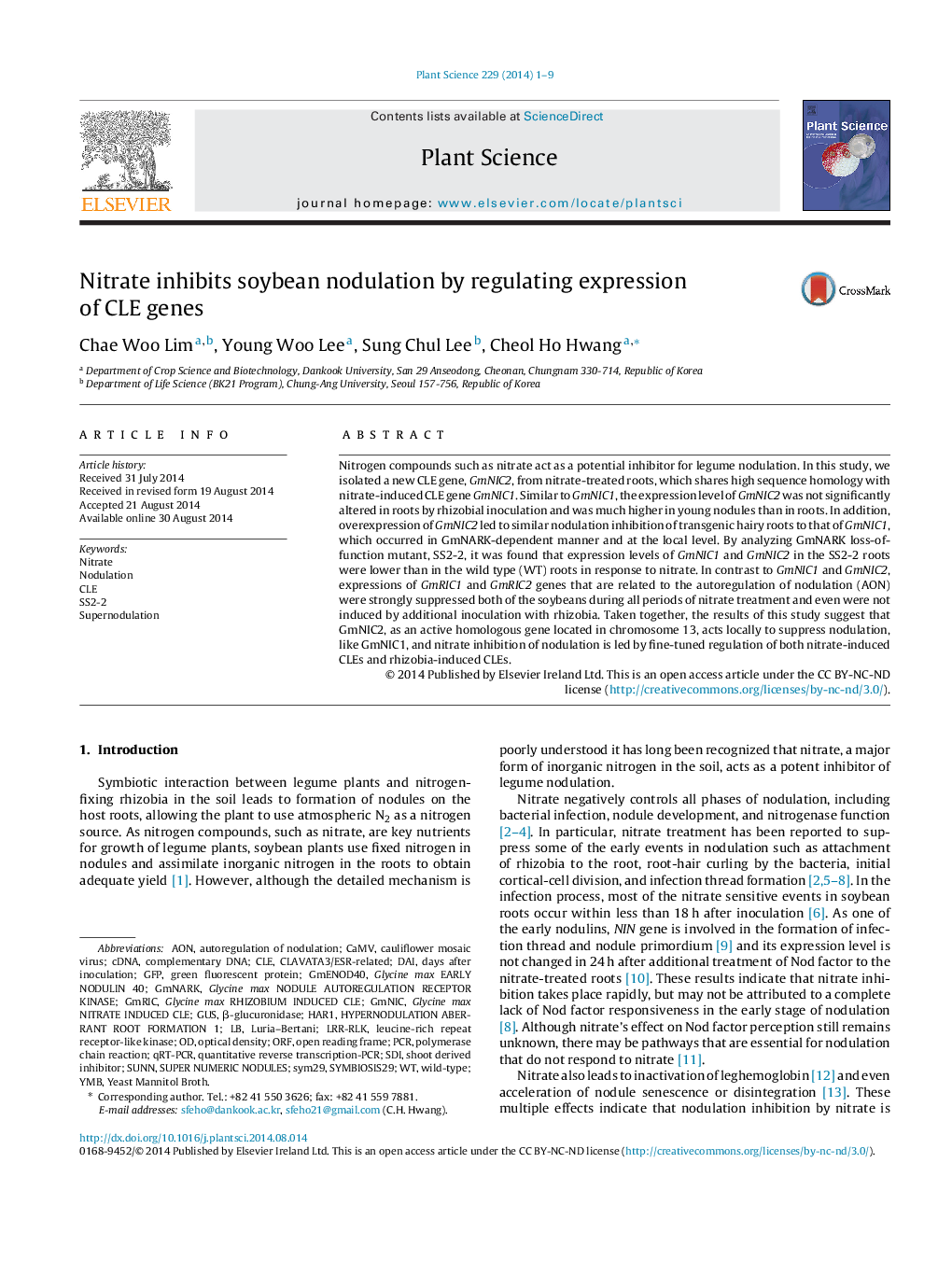| Article ID | Journal | Published Year | Pages | File Type |
|---|---|---|---|---|
| 8358009 | Plant Science | 2014 | 9 Pages |
Abstract
Nitrogen compounds such as nitrate act as a potential inhibitor for legume nodulation. In this study, we isolated a new CLE gene, GmNIC2, from nitrate-treated roots, which shares high sequence homology with nitrate-induced CLE gene GmNIC1. Similar to GmNIC1, the expression level of GmNIC2 was not significantly altered in roots by rhizobial inoculation and was much higher in young nodules than in roots. In addition, overexpression of GmNIC2 led to similar nodulation inhibition of transgenic hairy roots to that of GmNIC1, which occurred in GmNARK-dependent manner and at the local level. By analyzing GmNARK loss-of-function mutant, SS2-2, it was found that expression levels of GmNIC1 and GmNIC2 in the SS2-2 roots were lower than in the wild type (WT) roots in response to nitrate. In contrast to GmNIC1 and GmNIC2, expressions of GmRIC1 and GmRIC2 genes that are related to the autoregulation of nodulation (AON) were strongly suppressed both of the soybeans during all periods of nitrate treatment and even were not induced by additional inoculation with rhizobia. Taken together, the results of this study suggest that GmNIC2, as an active homologous gene located in chromosome 13, acts locally to suppress nodulation, like GmNIC1, and nitrate inhibition of nodulation is led by fine-tuned regulation of both nitrate-induced CLEs and rhizobia-induced CLEs.
Keywords
YMBSDIDAICLECaMVGUSqRT-PCRGFPHAR1ORFLRR-RLKSupernodulationcDNAComplementary DNAβ-glucuronidaseNodulationdays after inoculationquantitative reverse transcription-PCRleucine-rich repeat receptor-like kinaseopen reading frameLuria–Bertaniwild-typeNitratepolymerase chain reactionPCRcauliflower mosaic virusgreen fluorescent proteinoptical densityAON
Related Topics
Life Sciences
Agricultural and Biological Sciences
Plant Science
Authors
Chae Woo Lim, Young Woo Lee, Sung Chul Lee, Cheol Ho Hwang,
